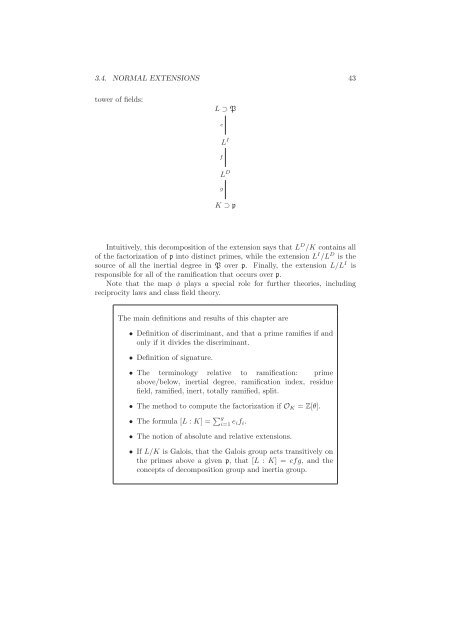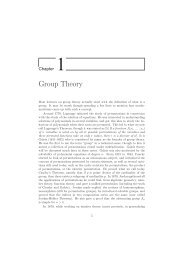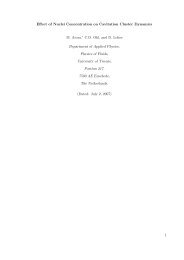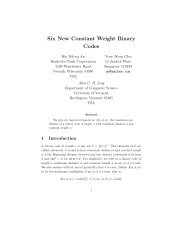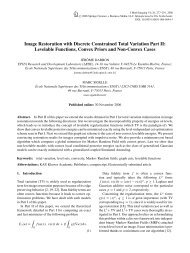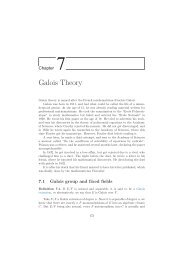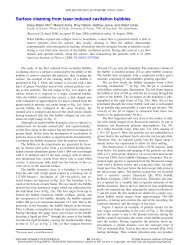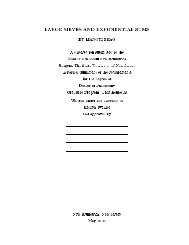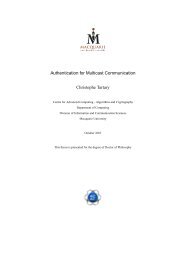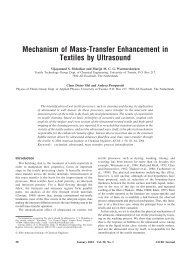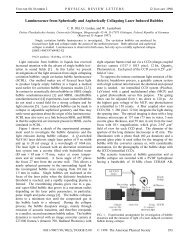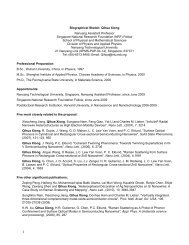Ramification Theory
Ramification Theory
Ramification Theory
You also want an ePaper? Increase the reach of your titles
YUMPU automatically turns print PDFs into web optimized ePapers that Google loves.
3.4. NORMAL EXTENSIONS 43<br />
tower of fields:<br />
L ⊃ P<br />
e<br />
f<br />
L I<br />
L D<br />
g<br />
K ⊃ p<br />
Intuitively, this decomposition of the extension says that L D /K contains all<br />
of the factorization of p into distinct primes, while the extension L I /L D is the<br />
source of all the inertial degree in P over p. Finally, the extension L/L I is<br />
responsible for all of the ramification that occurs over p.<br />
Note that the map φ plays a special role for further theories, including<br />
reciprocity laws and class field theory.<br />
The main definitions and results of this chapter are<br />
• Definition of discriminant, and that a prime ramifies if and<br />
only if it divides the discriminant.<br />
• Definition of signature.<br />
• The terminology relative to ramification: prime<br />
above/below, inertial degree, ramification index, residue<br />
field, ramified, inert, totally ramified, split.<br />
• The method to compute the factorization if OK = Z[θ].<br />
• The formula [L : K] = g<br />
i=1 eifi.<br />
• The notion of absolute and relative extensions.<br />
• If L/K is Galois, that the Galois group acts transitively on<br />
the primes above a given p, that [L : K] = efg, and the<br />
concepts of decomposition group and inertia group.


